Essential Disinfectants for Bird Cage Care
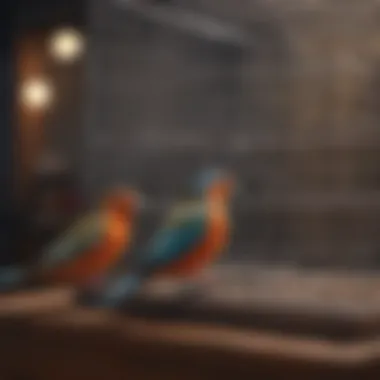
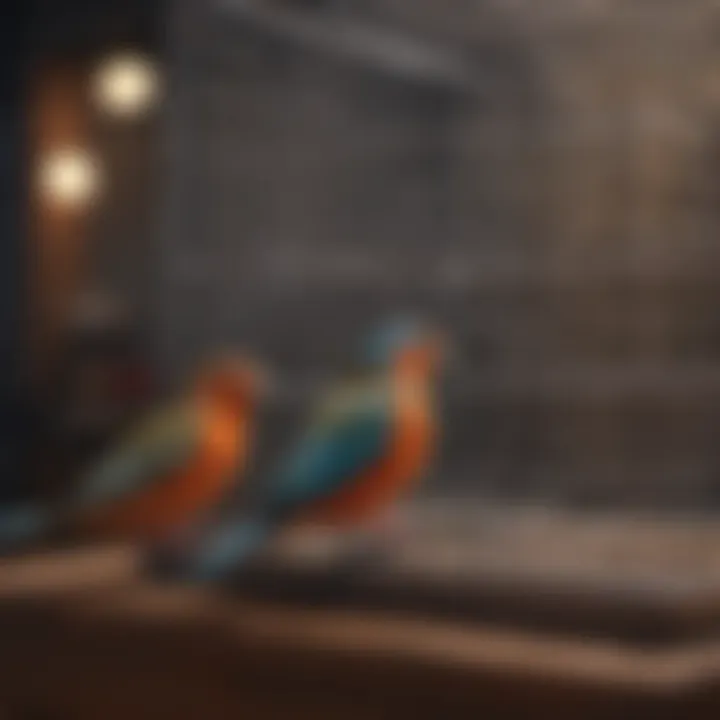
Intro
Maintaining a clean and sanitary living space for pet birds can’t be overstated. Just like you wouldn’t want to live in a pigsty, your feathered friends deserve a home free from harmful bacteria and viruses. It’s essential to understand that many common cleaning products aren’t suitable for the delicate respiratory systems of birds. The aim here is to explore effective disinfectants tailored to bird cages, ensuring not only cleanliness but also the health of your cherished pets.
"A clean cage is a happy cage – for both birds and their owners."
In this guide, we’ll delve into the different types of disinfectants available, discuss how to use them effectively, and touch on safety measures to keep your birds safe. We’ll also highlight the importance of regular cleaning routines and the right products to make this chore as efficient as possible.
Understanding Your Pet
Pet Behavior Basics
Birds, much like humans, have their own unique quirks and personalities. Understanding their behavior can greatly enhance your relationship with them. Whether it’s a budgie chirping for attention or a cockatiel preening its feathers, each action can provide insight into what your bird needs.
Common Breed Characteristics
Different bird species exhibit distinct behavioral traits. For instance, Parakeets are known for their social nature, whereas Cockatoos can be more demanding. Recognizing these characteristics can help when selecting the right cleaning products that won’t interfere with your bird’s temperament.
Species-Specific Needs
Each bird species has its own requirements for care, including their cage environment. Some might be sensitive to certain smells or chemicals, making it crucial to adopt a careful approach when using disinfectants.
Pet Care and Maintenance
Feeding Guidelines
Providing a balanced diet is key to your bird’s health. A diet filled with fresh fruits, vegetables, and high-quality pellets will support their immune systems and allow them to thrive. A clean feeding environment also minimizes waste, which cuts down on the cleaning needed later.
Grooming Essentials
Regular grooming is also a form of maintenance. This includes providing ample opportunities for your bird to bathe and ensuring that their feathers look pristine. Clean cages contribute to better grooming habits.
Hygiene Practices
Regularly disinfecting your bird’s cage and accessories is crucial to prevent illness. Knowing the best practices, such as how often to clean or what tools to use, can make this task simpler.
Training and Development
Basic Commands and Skills
Training your bird isn’t just for fun; it can help manage any unwanted behaviors that can arise from neglectful cleaning habits. A well-trained bird is likely to be calmer and healthier.
Behavioral Training Techniques
Employing positive reinforcement techniques can foster a strong bond with your avian companion while encouraging them to follow commands, including staying away from areas that are being cleaned.
Addressing Common Behavior Issues
Disruptive behaviors can sometimes be linked to a dirty environment. Addressing hygiene along with training may aid in reducing stress and anxiety in your bird.
Health and Wellness
Routine Vet Check-ups
Regular check-ups with an avian vet are vital. Together with a clean living space, this ensures your birds are healthy and can receive immediate care if any issues arise.
Vaccination Needs
Vaccinations play an integral role in your pet’s health. Consulting your veterinarian about recommended vaccines can provide an additional layer of protection against potential illnesses caused by unsanitary conditions.
Recognizing Signs of Illness
Be alert to changes in behavior—like unusual lethargy or feather plucking. A clean environment helps prevent many illnesses, but vigilance is always required.
Enrichment and Activities
Indoor vs. Outdoor Activities
Birds benefit from a mix of indoor and outdoor activities. While cleaning the cage is essential, allowing them flight time in a safe area can improve their overall mood and health.
Interactive Toys and Games
Providing engaging activities keeps your bird mentally stimulated and encourages them to expend energy, which can contribute to their overall well-being.
Socialization Opportunities
Birds are social creatures, and interaction helps them develop skills and reduce stress. Rotating available toys or cleaning just as you would their play areas maintains a supportive environment for them.
As we navigate through the different cleaning options in the following sections, always remember that a safe and clean space is fundamentally tied to your bird's health. Moving onward, we’ll explore the multitude of disinfectants available specifically for your feathered compansions.
Understanding the Importance of Disinfection in Bird Care
Maintaining a clean environment for pet birds is not just a matter of aesthetics. Disinfection plays a pivotal role in ensuring the health and wellbeing of avian companions. Birds, though often seen as resilient creatures, are susceptible to a host of illnesses that can stem from unhygienic living conditions. Thus, understanding the significance of disinfection should be at the forefront of every bird owner's mind.
The Role of Hygiene in Bird Health
Hygiene in a bird's habitat can be likened to the foundation of a house; if the foundation is shaky, the entire structure is compromised. A clean living space helps prevent the accumulation of feces, leftover food, and feathers that can harbor bacteria and parasites. Just as humans wash their hands to avoid illness, birds thrive in an environment that is kept hygienic. The presence of harmful pathogens can lead to stress and weakened immunity in birds, making them more susceptible to infections. Regular disinfection removes these potential threats. Furthermore, a clean cage contributes significantly to a bird's overall mood, promoting a happier and more active lifestyle.
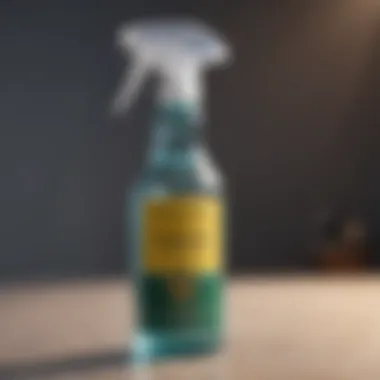
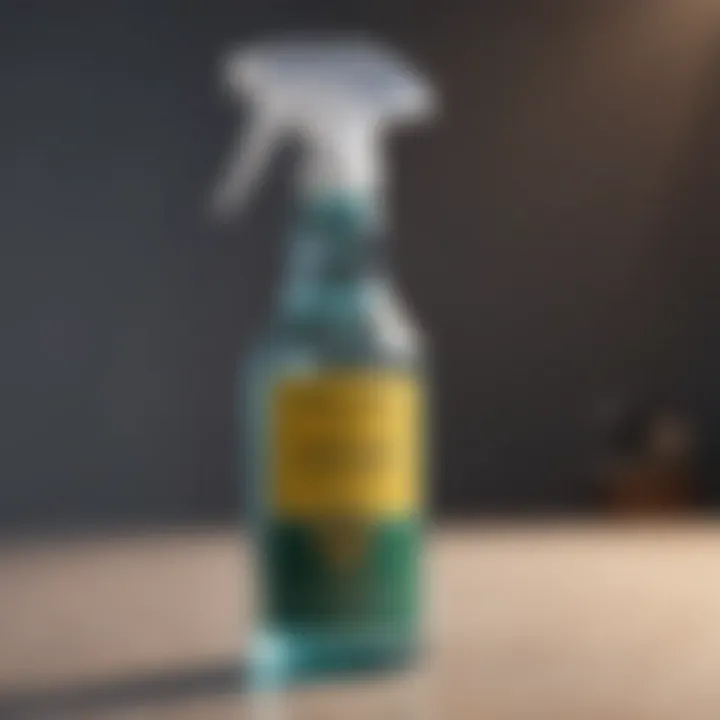
Common Diseases in Birds Linked to Poor Hygiene
Bird owners may not realize that inadequate cleanliness can lead to serious health concerns. Here are some common diseases that can arise from poor sanitation:
- Psittacosis: Also known as parrot fever, this disease is bacterial in nature and spreads through contaminated feces or respiratory secretions. Infected birds can exhibit symptoms ranging from lethargy to respiratory distress.
- Candidiasis: Often caused by an overgrowth of the yeast Candida, poor cage hygiene can create an environment conducive to infection. Symptoms include abnormal droppings and digestive issues.
- Salmonellosis: This bacterial infection can affect both birds and humans, transmitting through contaminated food or surfaces. Symptoms in birds include diarrhea and vomiting.
The takeaway is clear: a consistent disinfection routine is crucial to warding off diseases that can rob your bird of health and happiness. Staying informed and proactive in cage cleaning will enable owners to give their feathered friends the best life possible.
"Cleanliness is not next to godliness; it is the first step to keeping your birds healthy and happy."
A regimen of regular disinfection reassures bird owners that they are doing their part to ensure the longevity and vitality of their pets. Achieving a perfect balance of cleanliness and comfort in your bird’s habitat ensures not just survival, but a life brimming with happiness and vitality.
Types of Disinfectants for Bird Cages
Disinfectants play an essential role in maintaining a healthy environment for pet birds. With the presence of bacteria, fungi, and viruses that can thrive in bird cages, understanding the various types of disinfectants available helps in selecting the right product for effective sanitation. Choosing the appropriate disinfectant not only helps in preventing diseases but also ensures the overall wellbeing of your feathered friends. This section dives into the two main categories of disinfectants—chemical and natural—along with a comparison of their effectiveness and application methods.
Chemical Disinfectants
Chemical disinfectants are widely used for their potent ability to eliminate harmful microorganisms often found in bird cages. These products, typically powered by active antibacterial agents, provide a thorough clean to surfaces that are habitually exposed to droppings, food residue, and moisture.
Some common chemical disinfectants include:
- Bleach solutions: They are inexpensive and effective against a broad spectrum of pathogens. Diluting chlorine bleach with water (usually one part bleach to nine parts water) can be effective, but it’s crucial to allow it to act for at least 10 minutes before rinsing.
- Phenolic compounds: Found in products like Pine-Sol, these are known for their ability to disinfect and deodorize simultaneously.
- Quaternary ammonium compounds (QACs): These are user-friendly and effective against a range of microbes while being less corrosive than bleach.
While chemical disinfectants can offer a robust cleanup, caution is also warranted. Proper ventilation is a must when using these products so that the fumes do not affect your birds' respiratory health. Moreover, some chemical residues may pose further health risks if the cages are not rinsed thoroughly.
Natural Disinfectants
On the other hand, natural disinfectants have gained popularity among those who prioritize non-toxic solutions. For bird owners concerned about the implications of harsh chemicals, these alternatives can be effective in maintaining cleanliness.
Some notable natural disinfectants include:
- Vinegar: This is a gentle acid that can kill bacteria and molds. Mixing equal parts of vinegar and water is a common practice, although it might not be effective against all pathogens.
- Baking soda: Often used in conjunction with vinegar, baking soda can neutralize odors and provide a mild scrubbing action when cleaning cage surfaces.
Natural disinfectants are generally safe but may require more frequent application to achieve equivalent antimicrobial efficacy compared to their chemical counterparts. They are particularly well-suited for smaller-scale cleanings or lightly soiled environments.
Comparison of Different Disinfectant Categories
When deciding between chemical and natural disinfectants, it is crucial to consider several factors:
- Effectiveness: Chemical disinfectants often provide a stronger solution for severe bacterial outbreaks, while natural alternatives work best for routine upkeep.
- Safety: Most natural disinfectants are safer for birds and humans, which makes them attractive in households with children and pets.
- Cost: Chemical options like bleach are usually less expensive per use compared to specialized natural products.
In essence, a thoughtful approach involving both types of disinfectants can be beneficial. Larger disinfection tasks can be tackled with chemical solutions, then maintained with natural products regularly.
"The best approach combines thorough cleaning with appropriate disinfectants that align with both effectiveness and safety for your birds."
Active Ingredients to Consider
When it comes to disinfecting bird cages, understanding the active ingredients of various disinfectants is crucial. These compounds not only determine the effectiveness of the disinfectant but also impact the safety of your feathered companions. Choosing the right active ingredients ensures that pathogens are eliminated without causing harm to your birds or their environment. Proper disinfection limits the risk of disease and improves the overall quality of life for your pet.
Chlorine Compounds
Chlorine compounds, commonly recognized for their potent disinfectant qualities, are often used in various cleaning products. These chemicals effectively target bacteria and viruses, providing a deep clean that can be essential in a bird's living space. Sodium hypochlorite, often found in household bleach, is one of the more prominent chlorine compounds.
However, while chlorine is a fierce enemy to germs, it poses risks too. It can be harmful to birds if inhaled or absorbed through their skin. Always ensure proper ventilation when using any chlorine-based disinfectant, and follow up with thorough rinsing to minimize residue. The key benefits include:
- Powerful germicidal properties
- Fast-acting and effective in various environments
- Inexpensive and widely available
On the downside, avoid contact between chlorine and ammonia found in urine or other cleaning products, as this creates toxic chlorine gas. Safety first!
Quaternary Ammonium Compounds
Quaternary ammonium compounds, often shortened to "quats," are another popular choice among disinfectants. They are well known for their surface-active properties, meaning they disrupt the cell membranes of pathogens, leading to their demise. These compounds have gained recognition for being safe and effective in many settings.
With quats, you can enjoy distinct advantages:
- Broad-spectrum activity against a variety of bacteria and viruses
- Considered safer for pets when used properly
- Leaves behind a residual disinfecting effect
It's important not to underestimate their effectiveness, but keep in mind there may be residue left behind that could irritate sensitive skin or respiratory systems. Always ensure that any remaining disinfectant is completely dried before returning the birds to their habitat.
Hydrogen Peroxide
Hydrogen peroxide is gaining traction as a natural disinfectant, admired for its simplicity and effectiveness. When it breaks down, it results in water and oxygen, which makes it an eco-friendly option. This active ingredient excels in targeting a wide range of pathogens, including bacteria, viruses, and fungi. It’s also a great choice for spot cleaning due to its high surface tension, which helps it reach tighter spaces.
Key traits of hydrogen peroxide include:
- Non-toxic when used at appropriate concentrations
- Safe to use around pets and children, when properly diluted
- Breaks down into safe byproducts after use
However, it can bleach surfaces if left too long or used in concentrated form. Rinsing with water after applying ensures both safety and preservation of the cage material.
Vinegar and Baking Soda Mixture
Vinegar and baking soda is like the dynamic duo of natural cleaning agents. Vinegar serves as an acid that dissolves grime and disinfects, while baking soda is a natural abrasive that deodorizes and cleans. Together, they create a fizzing reaction that loosens dirt and debris.
Benefits of this mixture:
- Completely natural, non-toxic, and safe for birds
- Economical and easily accessible
- Effective against many forms of bacteria and odor
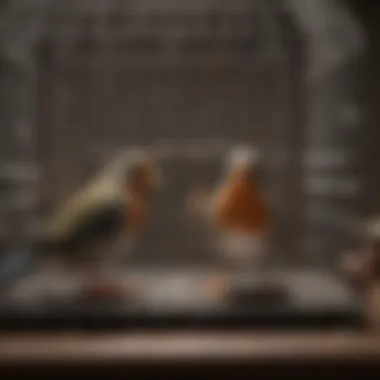
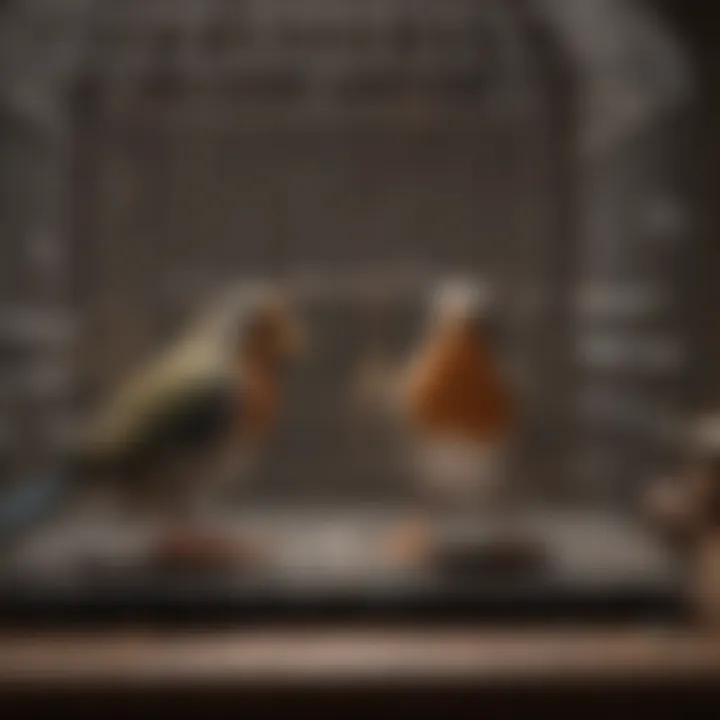
While this battering duo is fantastic, it's good to remember that they may not be as effective on stubborn pathogens compared to stronger chemical options. For routine maintenance, however, this blend can be a real game changer, contributing to a fresher and cleaner environment.
Remember that whatever method you choose, always test a small area first to ensure compatibility with cage materials and never compromise on diligence during your cleaning routine.
Choosing the Right Disinfectant
Selecting an appropriate disinfectant for your bird's habitat is not just about picking something off the shelf; it’s a vital step in ensuring the health and safety of your feathered friend. A suitable disinfectant can eliminate harmful pathogens, parasites, and bacteria that may thrive in a cage environment. However, it's crucial to also consider the potential effects on the birds and the overall environment too. You wouldn't want to trade one problem for another by causing harm due to the very cleaners meant to protect your pet.
Factors to Consider When Selecting a Disinfectant
When on the hunt for an effective disinfectant, several key factors should guide your decision:
- Bird Safety: This is paramount! Consider whether the ingredients in the disinfectant are safe for your bird. Certain chemicals might be effective against germs but can be toxic or irritating to your avian companion.
- Type of Cage: The material of your bird cage can also dictate your choice. Metal, for example, may not react well with acidic cleaners, while wooden cages could absorb fluids, leading to decay. Therefore, match the disinfectant with your cage material.
- Efficacy: Not all disinfectants are created equal. Research their effectiveness against common pathogens associated with birds, such as psittacosis or aspergillosis. Check for labels mentioning specific germs or fungi they can eliminate.
- Ease of Use: Some disinfectants require lengthy application processes or specific preparation methods. The more straightforward and user-friendly the product, the more likely it is that you will stick to a cleaning schedule.
- Environmental Impact: Consider opting for eco-friendly products that maintain cleanliness without introducing harsh chemicals into your home or harming the planet. Sometimes, a natural option may work just as well and be safer for your bird.
Effectiveness Against Specific Pathogens
Different disinfectants bring unique benefits to the table when it comes to battling specific pathogens. Knowing which disinfectant works against which issues can greatly enhance your cleaning routine:
- Chlorine-Based Disinfectants: These are often lauded for their power against bacteria and viruses. Chlorine bleach is a common choice but should be used carefully due to its harshness on both materials and air quality.
- Quaternary Ammonium Compounds: These are gentler yet still effective. They work well against a range of bacteria, fungi, and viruses. If you're looking for a more manageable solution that isn’t overwhelmingly toxic when dried, this could be your ticket.
- Hydrogen Peroxide: An underrated disinfectant, it effectively kills viruses and bacteria upon contact. It's also non-toxic, making it a good option for spaces occupied by birds.
- Natural Solutions: DIY mixtures, like vinegar and water, have had varying degrees of reported effectiveness, but they can certainly help combat milder bacterial loads and freshen up your bird's environment with lower toxicity levels.
Important Note: Always rinse the cage thoroughly after application, regardless of the disinfectant used, to ensure no harmful residue remains.
Understanding these factors and the specific effectiveness of various disinfectants can guide you in making a decision that balances cleanliness and safety for your pet birds. Proper research and consideration will lead to a healthier and happier home for your small companions.
Application Techniques for Effective Disinfection
Proper disinfection of bird cages is not merely a task; it's a vital practice that can dictate the overall health of your feathered friends. The application techniques you employ during the disinfection process can significantly enhance the effectiveness of the disinfectants used. By understanding how to prepare the cage thoroughly, apply the chosen disinfectant correctly, and follow proper rinsing and drying procedures, you will create an environment that minimizes the risk of disease and promotes well-being.
Preparing the Cage for Disinfection
Before diving into disinfection, one must remove all items from the cage like toys, perches, and food or water dishes. This stage is not just about clearing the space; it allows for a comprehensive approach to cleanliness. Scrubbing down these components with hot soapy water can help remove built-up grime and bacteria. Pay attention to corners and places where droppings may hide.
- Conduct a Thorough Inspection: Examine the cage for any signs of wear or damage. This also includes checking for hidden nests or debris that might harbor pests.
- Use Gloves: Always wear gloves during the cleaning process. It protects your skin from harsh chemicals and prevents cross-contamination from pathogens.
- Ventilation is Key: Ensure the area where you're cleaning is well-ventilated. This is especially important if you're using chemical disinfectants, as many can release fumes that are harmful to both humans and birds.
Proper Application Methods
Once the cage is prepared, it’s time to apply the disinfectant. Different products come with unique instructions, and following these is crucial. Generally, however, you’ll want to spray or wipe down surfaces rather than soak them.
- Technique Matters: Use a spray bottle for an even application, but avoid direct spraying onto the birds if they're still in the room. If you are using wipes, ensure they are sufficiently moistened to cover surfaces effectively.
- Let it Sit: Allow the disinfectant to sit for the recommended contact time. This is the time needed for the disinfectant to work its magic and kill off pathogens. Skipping this step can lead to ineffective cleaning.
- Be Mindful of Equipment: For difficult surfaces, consider using scrub brushes that are safe for use with your disinfectant. Abrasive or metallic scrubbers can damage delicate cage finishes.
Rinsing and Drying Procedures
After applying the disinfectant, don’t forget to rinse the cage thoroughly. This step is often overlooked but is important to ensure that no chemical residues remain, which could be harmful to your birds.
- Rinsing: Use clean water to rinse off surfaces. A damp cloth can help wipe down areas that may have absorbed too much disinfectant. Ensure that you rinse water is clean as well, to avoid reintroducing germs.
- Drying: Allow the cage to air dry completely before reintroducing any items or the birds themselves. Moist environments can lead to mold growth, which can be detrimental to bird health.
Tip: Make it a practice to check that all surfaces are dry and free from disinfectant residues before putting your birds back into the cage. This care can greatly reduce unexpected health issues.
By adhering to these techniques, bird owners can foster a safer habitat for their feathered companions, minimizing the risk of diseases that stem from unclean environments. A consistent disinfection routine not only protects your birds but also fosters peace of mind for you.
Safety Considerations for Bird Owners
When it comes to the health and happiness of our feathered companions, safety should always be at the forefront. The disinfectants used in bird cages play a significant role, not just in cleaning, but also in safeguarding your birds' well-being. Understanding the potential hazards tied to various chemical agents is crucial.
Birds, being more sensitive than many other pets, can suffer from adverse effects if exposed to toxic substances. Disinfectants that are hazardous to their respiratory systems, skin, or overall health can lead to severe consequences. This makes it paramount for bird owners to delve into the specifics of the products they choose.
Toxicity Risks of Various Disinfectants
Not all disinfectants are created equal. Some are harsh and can pose serious health risks to birds. Ingredients such as phenols, formaldehyde, or other strong chemicals can potentially lead to respiratory distress or skin irritation in birds.
Take, for instance, quaternary ammonium compounds. While effective, these can be harmful if not used correctly. Birds can experience difficulty breathing or skin burns if they are exposed to such agents without proper ventilation or rinsing. Additionally, alcohol-based cleaners can be extremely flammable and present further risks in enclosed spaces, such as a bird cage.
A detailed understanding of the safety profile of each disinfectant helps in making informed choices. Here are some pointers to keep in mind:
- Read Labels Carefully: Always check the product label for toxicity information.
- Research Before Use: Look up particular disinfectants and birds' susceptibility to them.
- Opt for Bird-Friendly Options: Some natural disinfectants pose fewer risks than their chemical counterparts.
Always prioritize the health of your birds. Opt for safer, non-toxic alternatives when possible.
Minimizing Exposure During Application
To ensure that disinfecting is a safe process, measures should be taken to minimize birds’ exposure during application. After all, a clean cage should not come at the cost of your bird's health. Here’s how to do it:
- Ventilation is Key: Ensure that the area where you're applying the disinfectant is well ventilated. Open windows, and if safe, use fans to circulate air.
- Remove Your Birds: Before beginning any cleaning routine, safely take your birds out of their cages. This is a simple yet effective way to keep them away from harmful vapors or residues.
- Follow Instructions: Each disinfectant has specific guidelines regarding application and waiting periods before reintroducing birds. Strictly adhere to these instructions.
- Thorough Rinsing: After using any chemical disinfectant, rinse the cage thoroughly with water. This helps remove any residual chemicals that might harm your birds.
- Use Protective Gear: If the disinfectant is particularly strong, consider wearing gloves and a mask. This can limit your exposure and keep your area cleaner.
By approaching disinfection thoughtfully and carefully, bird owners can strike a balance between maintaining a clean environment and ensuring the safety of their cherished winged companions.
Maintaining a Regular Cleaning Schedule
Keeping bird cages clean is not just about aesthetics; it plays a crucial role in the overall health and wellbeing of your feathered companions. Regular cleaning prevents the buildup of harmful bacteria, fungi, and parasites that can jeopardize your birds' health. Creating a schedule makes the cleaning process manageable and consistent, rather than a daunting task that gets pushed to the back burner.
Frequency of Cleaning and Disinfecting
The frequency at which you should clean and disinfect your bird’s cage can vary based on several factors such as the size of the cage, the number of birds, and the bird species. Here’s a quick look at the broad strokes of how often you should perform different cleaning tasks:
- Daily Cleaning: Every day, you should remove uneaten food, discarded feathers, and any droppings. This simple act prevents unpleasant odors and minimizes disease risk.
- Weekly Cleaning: Set aside time once a week to do a more thorough clean, which includes scrubbing down the perches, dishes, and cage bars. This is also a good time to change the bedding materials.
- Monthly or Bi-Monthly Deep Cleaning: Every month or every two months, it’s wise to do a deep clean. This involves disassembling certain parts of the cage, such as the trays and removable components, soaking them in disinfectant, and ensuring every nook and cranny of the cage gets the attention it deserves.
A well-timed cleaning schedule, tailored to your specific situation, keeps bacteria and pests at bay, offering a safer habitat for your birds.
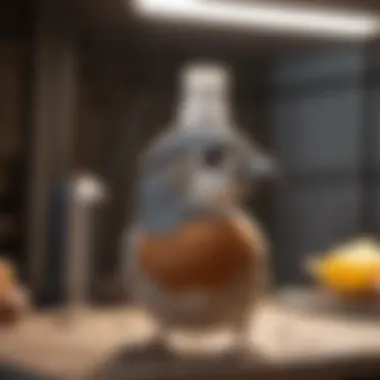
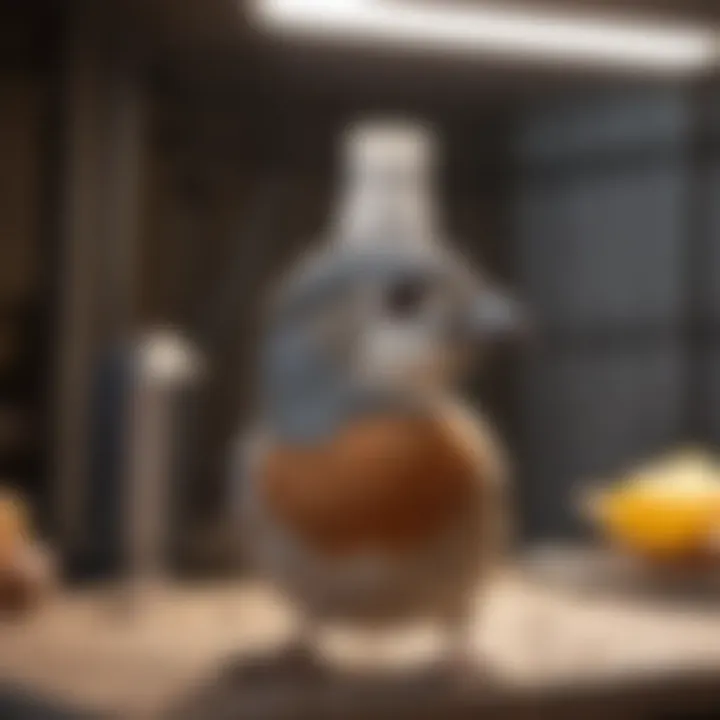
Establishing a Cleaning Routine
Establishing a cleaning routine is akin to installing a safety net; it ensures that crucial tasks aren’t overlooked.
- Create a Checklist: Drafting a checklist might help keep you on track. For example:
- Set Reminders: If you find it difficult to keep up with the schedule, consider using reminders on your phone or calendar. Just a gentle nudge can help turn cleaning into a habit.
- Daily: Remove droppings, fresh water, leftover food.
- Weekly: Scrub perches, clean food/water dishes, change bedding.
- Monthly: Deep clean with disinfectant, inspect and replace worn-out items.
"A cleaned cage is like a breath of fresh air for your birds. It boosts their health and keeps their spirits high."
- Get the Family Involved: Don't shoulder all the responsibility alone. Engaging family members in the cleaning process can turn it into a group activity. Assign simple tasks based on age and comfort levels, ensuring everyone contributes to the maintenance of your bird's hygienic environment.
By making cleaning a regular part of your routine, you not only secure a healthy space for your pets but also alleviate the anxiety around sudden, extensive cleaning sessions. It becomes second nature, much like feeding your birds or refilling their water.
Ultimately, a well-maintained cage is the foundation of good bird care. This commitment to regular cleaning protects your avian friends and enhances their overall quality of life.
Alternatives to Commercial Disinfectants
When it comes to maintaining a clean and safe environment for our feathered friends, relying solely on commercial disinfectants may not always be the best route. The search for alternatives is driven by various factors, such as cost, availability, and potential health risks associated with chemicals found in commercial products. This section explores viable options that not only ensure cleanliness but also safeguard the health of your birds.
Benefits of Alternatives:
- Cost-Effectiveness: Many DIY solutions can be made using ingredients you likely already have at home, cutting down on expenses.
- Safety: Some commercial disinfectants may contain chemicals that can be harmful to birds, especially if inhaled or ingested. Using household items is often safer and gentler.
- Environmental Concerns: Natural alternatives reduce chemical pollution, benefitting both your birds and the planet.
- Customization: Homemade solutions allow you to tweak the ingredients based on specific needs or preferences, making them suitable for various situations.
In this segment, we will delve into how to create effective DIY disinfectant solutions and how to responsibly utilize household items to maintain a healthy space for your avian companions.
DIY Disinfectant Solutions
Creating your own disinfectants can be a rewarding and practical approach to maintaining bird hygiene. Here are some popular and effective DIY formulas:
- Vinegar Solution:
- Essential Oil Mixture:
- Baking Soda Paste:
- Ingredients:
- Instructions: Mix both ingredients in a spray bottle. Vinegar is known for its natural antibacterial properties.
- 1 part white vinegar
- 1 part water
- Ingredients:
- Instructions: Combine in a spray bottle. These oils have antimicrobial properties and can provide a pleasant scent.
- 1 cup water
- 10 drops of tea tree oil or lavender oil
- Ingredients:
- Instructions: Mix until it forms a paste. This can be used to scrub harder stains or buildup in the cage.
- 1 cup baking soda
- Water (to create a paste)
These DIY solutions not only can save you money but also give you control over what goes into your bird's environment.
Utilizing Household Items Safely
Although many household items can serve as effective disinfectants, it's crucial to use them correctly to ensure safety for both your birds and family. Here are several considerations to keep in mind:
- Testing for Sensitivity: Always test a small area before applying any solution throughout the entire cage. This helps ensure that your birds will not have a negative reaction.
- Ventilation: When using potent items like vinegar or essential oils, make sure the area is well-ventilated. This minimizes the risk of overwhelming your birds with strong smells.
- Storage: Store homemade solutions in clearly labeled bottles, out of reach of both children and pets to prevent accidental ingestion.
- Avoid Harmful Combinations: Some common items, like vinegar and baking soda, react when combined. Use them separately in cleaning sessions to avoid hazardous fizzing or residue remains.
"Keeping our avian companions safe starts with understanding what goes into their environment. Being informed about alternatives empowers every bird owner."
By embracing these alternatives and applying them responsibly, bird owners can create a safe and clean habitat for their beloved pets while also establishing sustainable cleaning practices.
The Impact of Environment on Disinfectant Choice
Humidity and Temperature Effects
When it comes to the cleanliness of bird cages, the surrounding environment plays a pivotal role. This is especially true regarding humidity and temperature, as they can significantly influence the efficacy of disinfectants. You might not think about it, but if your bird's home is in a damp area, your chosen disinfectant might not pack the punch you expect.
Birds thrive in specific climates, and unfortunately, so do bacteria and fungi. High humidity levels can lead to increased microbial growth. This means that, in areas where moisture hangs heavy in the air, a simple disinfectant might not be sufficient. For example, chlorine-based solutions which work well in drier conditions might become less effective where humidity is prevalent, as they can evaporate quickly and fail to penetrate surfaces effectively.
On the flip side, if the temperature is too high, some disinfectants can break down faster than you can blink. This degradation can lessen their strength, which is concerning when trying to eliminate harmful pathogens. Therefore, it's crucial to read the label and understand how the product reacts under varying conditions.
"A clean cage is a happy cage, but don’t let humidity rain on your parade."
Considerations for Humidity and Temperature
- Evaluate the Environment: Keep an eye on the humidity levels. A hygrometer can be a handy tool to measure this. Ideally, for most birds, the humidity should be between 40-60%.
- Adapt Disinfectant Choices: In humid conditions, consider using disinfectants designed to withstand moisture, perhaps those containing hydrogen peroxide, which can remain effective longer in such settings.
- Timing is Key: When applying disinfectants, cool parts of the day might be best. This allows the agents more time to act before heat and humidity take over.
Practical Tips
- Adjust your cleaning routine depending on the weather. In rainy conditions, extra care may be needed, while dry seasons might require less vigilance.
- Store your disinfectants properly. Excessive moisture in the storage area can dilute or break down the chemicals before they even reach your bird's cage.
Understanding the nuances of humidity and temperature is not just about keeping your bird’s space spick and span; it’s about promoting their overall health and wellbeing. Tailoring your disinfectant choice to your specific climate factors can make all the difference in maintaining a clean and safe home for your feathered friends.
End: The Importance of Disinfecting Bird Cages
Maintaining a clean environment for pet birds is not just a matter of aesthetics; it’s a fundamental aspect of their health and longevity. Disinfecting bird cages effectively safeguards against various pathogens that could jeopardize your avian companion's well-being. It’s paramount for bird owners to recognize that the cages serve not just as a living space, but as a potential breeding ground for bacteria, mold, and germs. This understanding helps underline the real necessity of regular cleaning.
A thorough disinfection routine can significantly reduce the risk of common avian diseases, many of which arise from an unclean living space. The interaction between hygiene and health is straightforward: when cages are properly sanitized, birds breathe cleaner air, avoid ingesting harmful substances, and cut down their chances of contracting illnesses. Additionally, stress levels can decrease when birds feel secure in a tidy environment, contributing to their overall happiness.
"An ounce of prevention is worth a pound of cure."
In setting a cleaning regimen, it’s likewise important to take into account the type of disinfectants used—whether chemical or natural. It’s not solely about how often you clean, but also the safety of the products applied, both for the birds and their humans. Using harsh chemicals can backfire, causing respiratory issues or skin irritations. Hence, knowing which disinfectant works best, while also being safe, is key.
Final Thoughts on Bird Cage Hygiene
As the curtains draw on this comprehensive discussion, it’s clear that bird cage hygiene demands an all-hands-on-deck approach. Here are a few crucial bits to remember:
- Regularity is Key: Establish a cleaning schedule to keep germs at bay. Daily spot cleanings, coupled with weekly thorough disinfecting, can create a safer environment.
- Product Safety Matters: Always verify that the disinfectants used are safe for birds—opt for those explicitly designed for avian use.
- Be Conscious of Timing: Ensure cages are given enough time to dry after cleaning before putting the birds back. This helps eliminate any residue that may linger and potentially harm them.
Ultimately, ensuring that your feathered friends live in a clean cage is similar to watering a garden; it may seem minor but can have profound effects on growth and health. Proper disinfection not only protects against illness but also enhances the bond you share with your birds. A healthier habitat leads to happier pets, a clear win-win for everyone.







